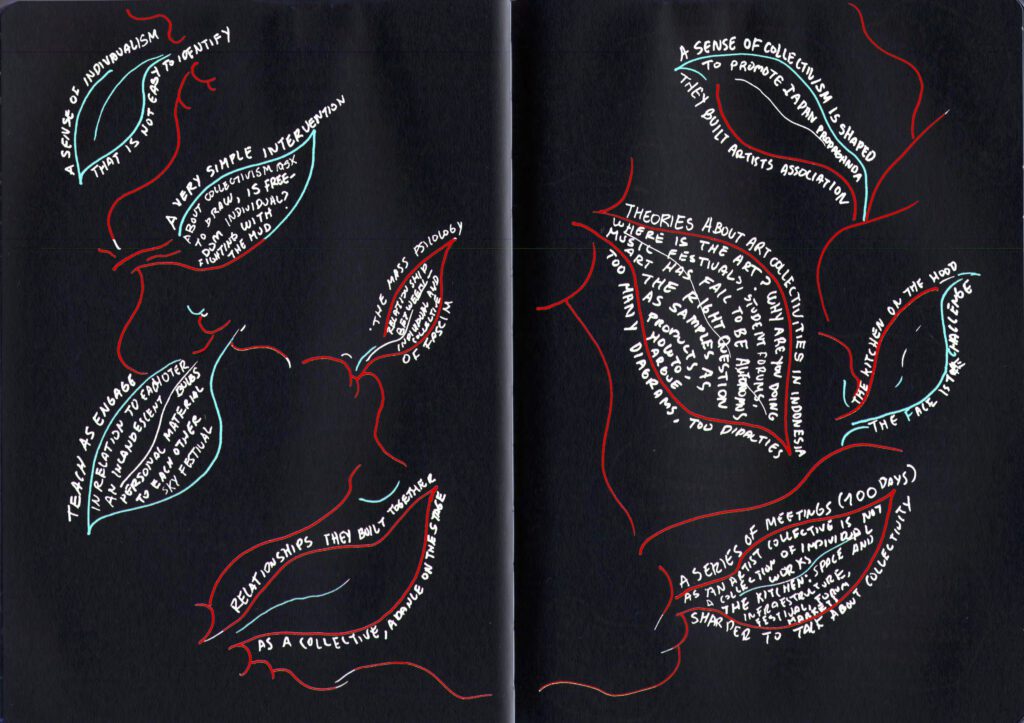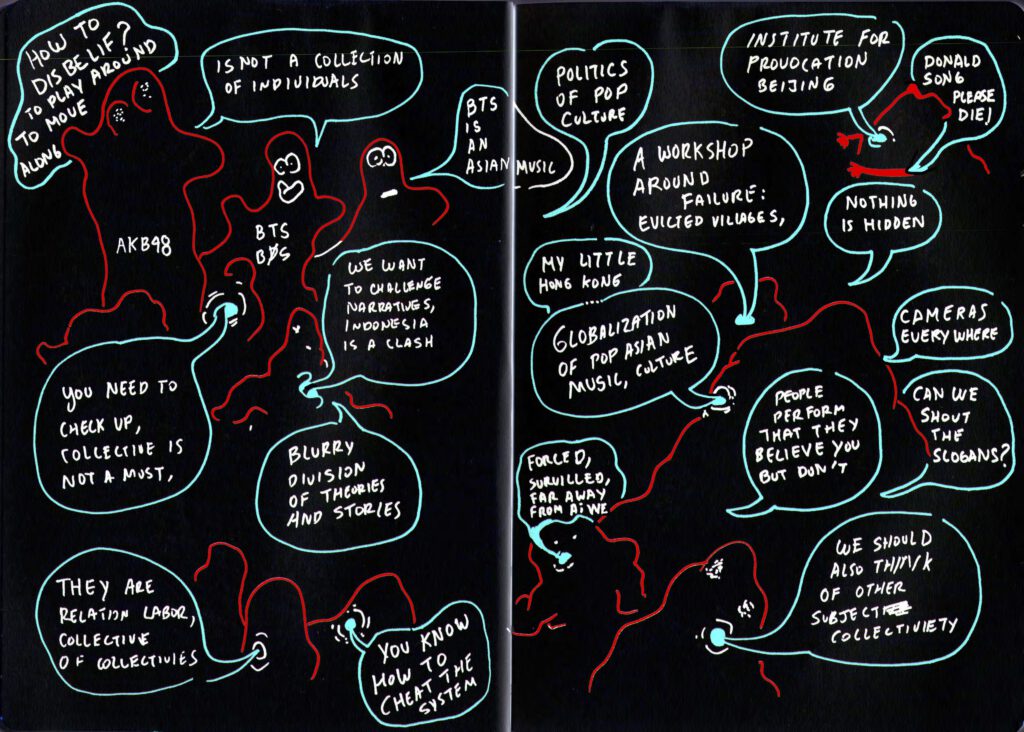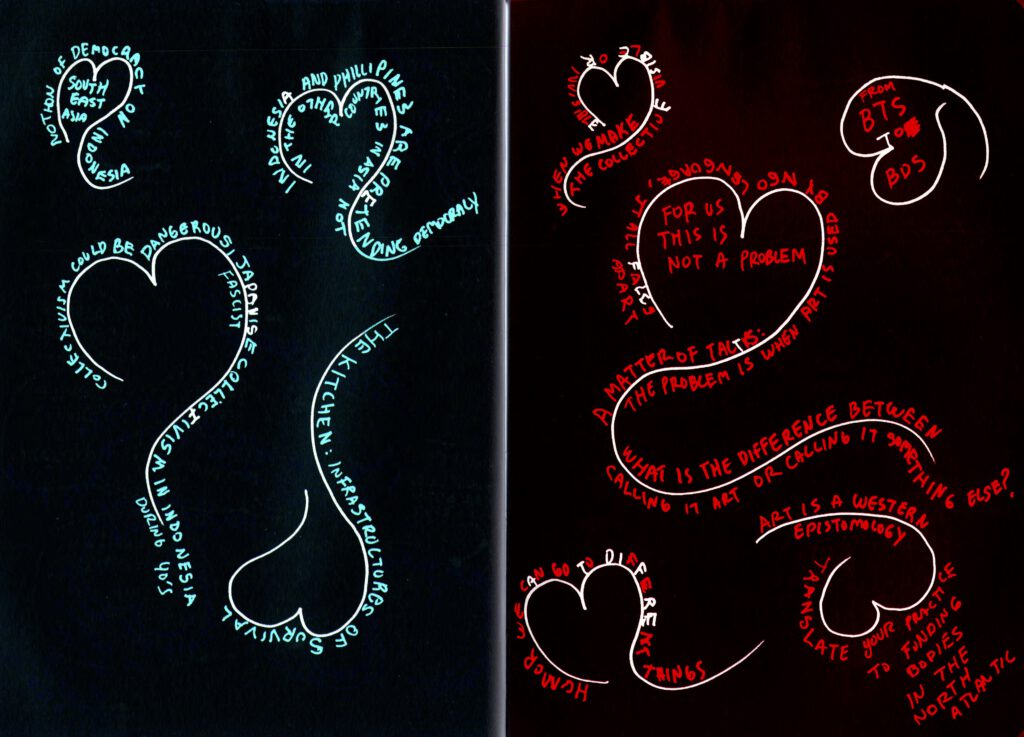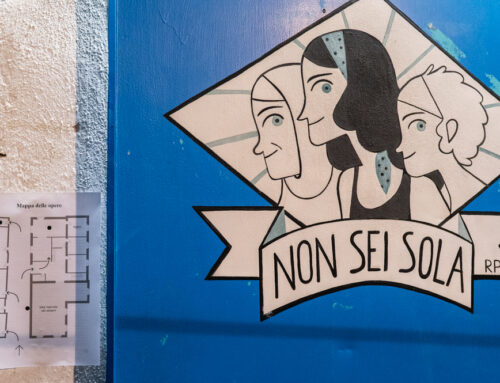Rethinking Transnationalism
Paul Goodwin, Jeroen de Kloet, Mi You
Harvest by Daniel Aguilar and Diana Cantarey
Hosted by Eszter Szakács
Rethinking Transnationalism hosted contributions by curators and scholars Mi You and Paul Goodwin, as well as cultural studies scholar Jeroen de Kloet. Common threads in the discussion around transnationalism included contrasting historical ideas of internationalism and inclusion, their promises, predicaments, and ongoing transformation.
Mi You shared two snapshots capturing the transnationalisation of arts and culture and its problems. One snapshot was about the World Social Forum. Starting in 2001 in Porto Alegre in Brazil, the event brought together various struggles by grassroots activists, mostly in and from the Global South, under the banner ‘Another World is Possible.’ While the World Social Forum has its problems and frictions – such as falling into the trap of national representation in such large-scale international festivals – for You, this is the last initiative to follow in the step of the congresses of the Internationalists. This is contrasted by another snapshot where artistic collectives are asked by their Western NGOs or embassies funders to strengthen ‘community resistance’ through their art. Their funding to travel to the forum pointed to a more general problem with the NGOisation of culture. However, You emphasised that the important question is not about where the money is coming from but rather about how to tactically navigate funding systems. She closed her contribution by signalling that a way forward could be to be clear about the ethics of our local struggles, before we ascend to the symbolic level of the transnational.
Paul Goodwin began by fleshing out the meanings of the prefix ‘trans’. He ‘activated the trans’ by opening up transnational readings, theories and strategies in art to radical perspectives such as intersectional black feminism and Caribbean postcolonial thought. Indeed, those move beyond familiar framings centred on notions of the international, national, and transnational, the local and the global, the West and the Non-West. He also shared the experience of his recently co-curated exhibition ‘UNTITLED: Art on the Conditions of Our Time’, involving black artists in Britain. A younger generation of black artists seems to be shifting away from formal, institutional strategies of inclusion and demands to be part of the canon. This was what the older generation of key black artists pushed for, including Sonia Boyce, Keith Piper, and Donald Rodney, who made art objects critical of racism. For Godwin, this turning away from, or refusal, to address the modern canon makes space for questions about emerging trans-operations encompassing objects, performances, sounds, and political organising strategies.
Jeroen de Kloet also tackled issues surrounding the fluctuations between concepts of the local and the international/global. De Kloet pointed out that in the last 20 years or the so-called burden of representation and self-orientalism have not really changed much, despite the growth of critical discourses. For instance, Chinese contemporary artists are still expected to say something about China—to represent it—and, preferably, by presenting a critical and political stance. While certain locations are discursively produced as setting trends and producing universals, others are seen as stuck in a specific geopolitical paradigm. The panel developed into a debate about the pros and cons of adopting transnationalism as a framing for critical theories, as it remains grounded on the notion of the ‘national.



